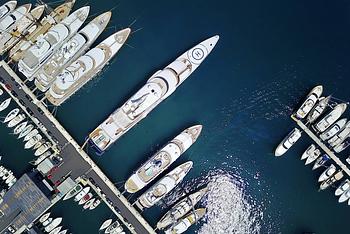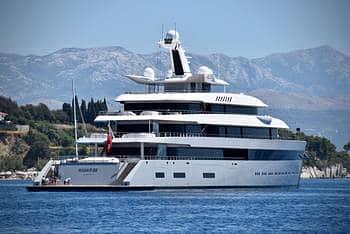Boats have always played an important role in history. The human desire to explore further saw our ancestors build bigger and better boats in which to do so. They were first built thousands of years ago, with remains of boats in Ancient Egypt and Oceania believed to be the very first dating to 3500BC. From the Vikings to the Romans, the Anglo-Saxons and the Nabateans, maritime history was a vital part of life for transporting troops and cargo, for fishing, and for travel and exploring. Today boats are still used for all of these reasons, yet it’s the popularity of recreational boating which has seen the 20th and 21st century stand out in the development of boats.
We only have to look at the millions of boats bobbing in marinas all across the world to see how important recreational boating has become to all cultures. In the United States alone, it is estimated that 142 million Americans go boating each year, with over 12 million recreational boats registered. Yacht clubs, racing as a sport, yacht charter holidays, and privately owned boats are today something anyone can enjoy and not, as once was, a pastime of royals and aristocrats.
As the industry makes giant strides in the development of yachts, with technology and innovation screeching forwards, the range and variety of recreational boats becomes ever-more available to us. Whether you’re in the market for a multi-million dollar superyacht, a 12-metre sailing yacht or a towable Jon boat or RIB, recreational boating is today any man’s sport. So how did it get to be this way? We take a look at the history of boats timeline.
Boats History, Evolution and Timelines
1600s: The First Recreational Yachtsman
To discover the very first recreational boats, we head to the UK and the River Thames. In 1660, after 10 years in exile in Holland, Charles II returned to his homeland and was gifted a glorious yacht by the Dutch. In fact, the word yacht derives from the Dutch word jachtschips (hunting boats). It was the beginning of a passionate love affair with boating, one which was shared by Charles’ brother James. Charles and James, who, fuelled by a fierce rivalry, held the very first regatta on the Thames in 1661.
Charles’ passion was contagious, and soon the rich and royals of Europe were embarking on their own yachting experiences. It was soon after, in the early 1700s, that these budding recreational yachtsmen came together to form the very first elite sailing clubs. Today yacht clubs and marinas number in their tens of thousands all across the globe.
1900s: Engines Make Boats Easier to Handle
With boats either sailed or rowed, crews were needed to man them, making boating a sport of the wealthy for several hundred years. All that started to change however, with the invention of the internal combustion engine in the 1800s. While cars became the first beneficiaries of powered movement, boats soon followed and by the early 1900s outboard motors were becoming ever more economical and accessible. In 1903, the very first motorboat race was held in the UK, sparking a new era in boating.
1920s and 1930s: Recreational Boating Gains Momentum
Throughout this period, motorboats gained popularity, although it was still wealthy buyers who were making the investments into the custom-built models. It was around this time that car manufacturing began to take shape on a larger commercial basis, with mass-production making them more available to the public. Boats started to follow suit, but before they could really take off, the outbreak of the Second World War put a stop to most leisure activities and industries.
1940s: The War Creates a Whole New Era of Boats
The Second World War ground many non-essential industries to a halt, and the fledgling recreational boating industry was no exception. Resources were scare and manufacturers had to focus their efforts on military contracts. Having said that, this period is also seen as having made a huge impact on the future of boating, predominantly with the invention of fibreglass. In the late 1940s and 50s, fibreglass boats began to emerge and suddenly a new affordable, sturdy and low maintenance option was available. So while this period interrupted the boating industry, it in fact catapulted it forwards in innovation terms, making it more accessible to more people.
1950s and 60s: Full Steam Ahead in Boating Innovation
Post-war and, the recreational boating industry boomed, and by 1959 some 450,000 boats were sold in the United States in a single year – doubling all those already in existence. Innovation went full speed ahead, and along with fibreglass boats came stern drive models as well as major steps in the safety of boat construction, from design to maintenance, operational awareness and safety equipment.
The popularity of boating as a family pastime really boomed during the 1960s, with the United States, South of France and UK at the forefront. Production went into overdrive, with many of today’s top boat builders and engine manufacturers such as SeaRay and Bayliner finding their origins during the late 50s and early 60s.
In 1968-69, Sir Robin Knox-Johnston made history by becoming the first man to sail solo non-stop around the world. It was an achievement which was to fuel a passion for long-range cruising and exploration.
1970s-90s: Riding the Economic Waves
It was some 50 years ago that the fastest ever boat, the Spirit of Australia, broke the world speed record with a soaring speed of 317.6 miles per hour. To this day, it still holds the record. It is the perfect example of the level of innovation the boating world was seeing at the time. Yet darker days were ahead and the 1970s saw the beginning of economic downturns which affected the boating industry that was to last for two more decades. With rising fuel prices, efficiency began to play a more important consideration, and it was at this time that the smaller, much-loved and more energy efficient jet-ski was born with the Kawasaki Jet Ski being the first personal watercraft to hit the market.
The 21st Century: Boating is Here to Stay
Today, yachting is more popular than it has ever been. Advancements in technology, design and materials have paved the way to make boats work more efficiently, be cheaper to purchase, more fit for purpose, safer and more comfortable. While wooden boats still exist, the vast majority of hulls are now fibreglass, with fishing boats, cruisers and water sports boats hugely popular as day or weekend boats. Sailing boats come in a myriad of models, their compact sizes and robust seaworthiness making them suitable for long-range cruising, whether they’re monohull or the catamarans and trimarans which continue to grow in appeal. At the other end of the scale, vast superyachts the size of cruise ships grace the oceans, with state-of-the-art design and development trickling down to smaller boat manufacturers.
Electronics and safety equipment add to the appeal of boating for many leisure and recreational boaters, with everything from computer controlled winches on sailing yachts to wind, water, and solar-powered generators, GPS systems, radars, electricity and so much more making the experience safe and enjoyable.
The Future of Boating
The COVID-19 pandemic which swept the world in 2020 ground everything to a halt, but never before has boating seemed as alluring as it did in the wake of the pandemic. Escaping the crowds, whether on your own boat or a yacht charter, has seen newcomers flock to experience boating for the first time, and holidays took on a new level of appreciation.
Recreational boating is ingrained in our society, the marinas with their gently bobbing yachts and oceans cruised by boats big and small more a part of our culture than we may realise. Whatever the future holds, a glance back through the past century shows us that the boating industry always makes a comeback. Today it is riding high, with boat shows drawing visitors in their tens of thousands, sales of new boats and used boats skyrocketing and innovation surging forward at a rate of knots.
Join the exciting world of recreational boating by chartering or buying your first boat. With guides on everything from how to buy a boat to mistakes to avoid when buying a boat, Rightboat.com are here to guide you every step of the way.
You May Also Like ...
- The Cost of Boating: Creating a Budget
- Should I join a Boat or Yacht club?
- 10 Top Innovations That Changed the Boating World
- Winter Sailing Gear Guide
- Top 10 Famous Classic Ships in History
Related Articles and Guides
21st Apr 2024
How Much Does a Superyacht Cost?
12th Mar 2024
What Is a Good Boat Name? Over 200 of the Best Boat Names
23rd Oct 2023
Yacht Maintenance Cost. The Real Costs of Owning a Superyacht
1st Oct 2023




